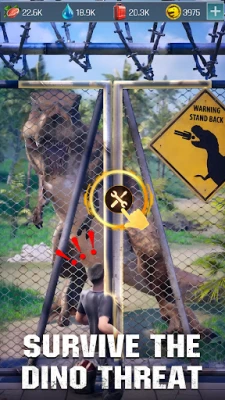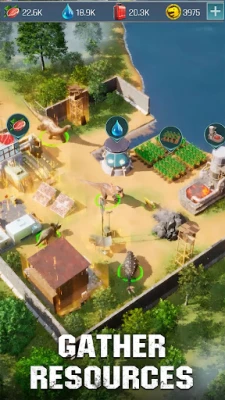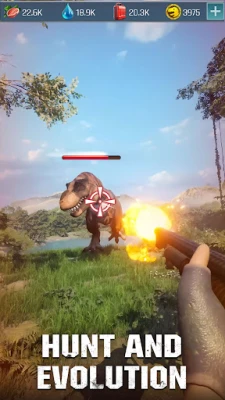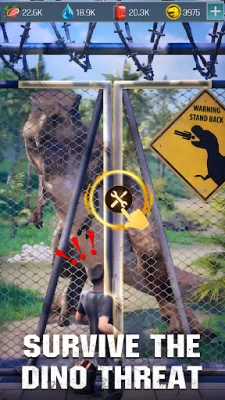
Latest Version
1.3.8.82
November 26, 2025
Shadow Group Studio
Games
Android
0
Free
com.sgs.google.dws
Report a Problem
More About Dino War: Survival
Reclaiming the Lost World: Mastering De-Extinction to Create Living Dinosaurs
Imagine a world where the majestic dinosaurs roam the Earth once again. The concept of de-extinction, the science of bringing back extinct species, has captured the imagination of scientists and enthusiasts alike. This article explores the fascinating journey of mastering de-extinction, designing the ultimate predator park, and the delicate balance of power within this recreated ecosystem.
The Science of De-Extinction
De-extinction is not merely a dream; it is a burgeoning field of scientific research that aims to resurrect species that have long vanished from our planet. By utilizing advanced techniques such as cloning, genetic engineering, and selective breeding, scientists are making strides toward bringing back iconic species like the woolly mammoth and, potentially, dinosaurs.
One of the most promising methods involves extracting DNA from preserved specimens and using it to create viable embryos. This process, known as genome editing, allows researchers to modify the genetic code of living relatives to resemble that of the extinct species. For instance, scientists are exploring the possibility of using chicken DNA to recreate certain traits of dinosaurs, as birds are considered their closest living relatives.
Designing the Ultimate Predator Park
Once the science of de-extinction has paved the way for the revival of dinosaurs, the next challenge lies in creating a suitable habitat for these magnificent creatures. Designing the ultimate predator park requires careful planning and consideration of various factors to ensure a balanced ecosystem.
Creating a Natural Habitat
The park must mimic the natural environments where dinosaurs once thrived. This involves recreating diverse ecosystems, including lush forests, open plains, and wetlands. Each area should cater to the specific needs of different dinosaur species, providing ample space for foraging, nesting, and social interactions.
Ensuring Safety and Security
With the return of apex predators, safety becomes a paramount concern. The park must implement robust security measures to protect both the dinosaurs and the visitors. This includes high-tech fencing, surveillance systems, and trained personnel to monitor the animals' behavior and ensure the safety of all involved.
Engaging the Public
To achieve global acclaim, the predator park must also focus on visitor engagement. Educational programs, guided tours, and interactive exhibits can help visitors understand the significance of de-extinction and the role these creatures play in our ecosystem. By fostering a sense of wonder and responsibility, the park can inspire future generations to appreciate and protect our planet's biodiversity.
The Ecosystem: Master or Prey?
In this recreated world, the dynamics of the ecosystem will be complex. As the park's creator, you hold the power to shape the environment, but with that power comes responsibility. In this ecosystem, you are either the master or the prey.
Understanding Predator-Prey Relationships
Every species plays a role in maintaining the balance of the ecosystem. Dinosaurs, as apex predators, will influence the population dynamics of other species within the park. Understanding these relationships is crucial for ensuring a stable environment. For instance, if a particular dinosaur species becomes too dominant, it could lead to the decline of other species, disrupting the entire ecosystem.
Monitoring and Adapting
Continuous monitoring of the park's inhabitants will be essential. By studying their behaviors, interactions, and health, park managers can make informed decisions to adapt the environment as needed. This proactive approach will help maintain balance and prevent any species from becoming too powerful or endangered.
The Future of De-Extinction
The journey of de-extinction is just beginning. As technology advances, the possibilities for reviving extinct species will expand. However, ethical considerations must guide these efforts. The implications of bringing back long-lost species raise questions about their place in the modern world and the potential consequences for existing ecosystems.
Ultimately, the goal of de-extinction should not only be to recreate lost species but also to enhance our understanding of biodiversity and conservation. By learning from the past, we can better protect the future of our planet and its inhabitants.
Conclusion
Reclaiming the lost world through de-extinction offers a thrilling glimpse into a future where dinosaurs once again roam the Earth. By mastering the science behind this endeavor and designing a predator park that respects the delicate balance of nature, we can create a living testament to the wonders of evolution. In this new ecosystem, the challenge lies in being the master, not the prey, as we navigate the complexities of life and survival in a world reborn.
Rate the App
User Reviews
Popular Apps










Editor's Choice































